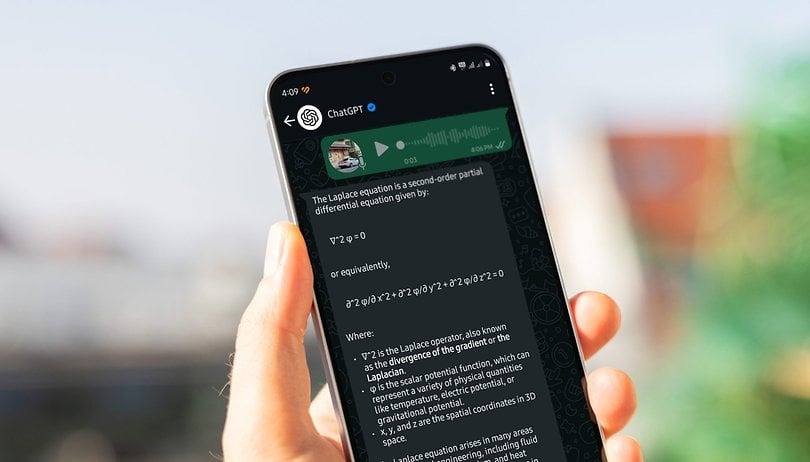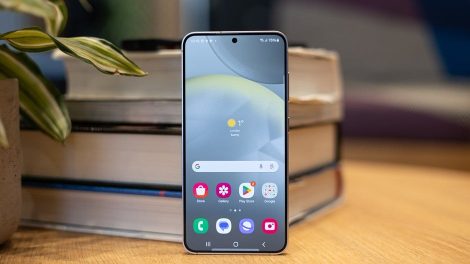ChatGPT has recently taken a significant step in redefining user interaction on WhatsApp. The introduction of advanced features allowing the processing of images and voice commands marks a pivotal development in how you engage with artificial intelligence on your favorite messaging app. With these enhancements, communication becomes more intuitive, dynamic, and adaptable to real-world needs.
The upgrade essentially transforms your interaction with ChatGPT from simple text-based conversations to a multimedia experience. By enabling image processing, you can now share photos directly with ChatGPT to get detailed descriptions, analyses, or creative ideas based on the visuals you upload. Imagine asking for assistance with identifying a rare plant, getting design suggestions for your living room based on an image, or even receiving advice on technical schematics—all through WhatsApp.

Similarly, the voice feature brings a new level of convenience, particularly for situations where typing is not practical. You might be driving, multitasking, or simply prefer talking over typing. With the new voice capability, you can communicate more naturally by dictating your requests or questions. ChatGPT then processes your spoken words and delivers responses that are just as accurate as its text-based replies.
One of the most critical aspects of these new functionalities is accessibility. Not everyone prefers or is able to type lengthy messages. Voice input and image processing democratize the way users interact with AI, making it easier for a broader audience, including those with visual or motor impairments. This development aligns well with the increasing emphasis on inclusive technology.
The implications for businesses using WhatsApp as a communication platform are immense. Customer service can be elevated to a whole new level. Imagine running a tech support line where customers can send pictures of faulty products or describe issues verbally rather than struggling to find the right words through text alone. Troubleshooting becomes faster, and customer satisfaction increases as the resolution process becomes more seamless.
Education and learning also benefit significantly from these advancements. Students can share images of complex diagrams or equations and receive guided solutions or explanations. Language learners can practice their speaking skills with ChatGPT by using the voice feature, receiving real-time feedback and corrections.
Security and privacy, as always, remain paramount. OpenAI has taken robust measures to ensure that the processing of images and voice data adheres to strict privacy standards. Data is not stored or shared beyond what is necessary to provide immediate responses. This is crucial for maintaining user trust, especially in an era where data privacy concerns are at an all-time high.
Incorporating these features into your daily life can make tasks quicker and more efficient. For instance, let’s say you’re trying to assemble furniture at home. Instead of combing through lengthy instructions, you can snap a picture of the confusing part and ask ChatGPT for guidance. If you’re in a new city and stumble upon a dish you can’t identify, a quick photo can get you all the information you need.
The voice feature is equally transformative. If you’re in the kitchen with your hands full and need a quick conversion from grams to cups, simply ask ChatGPT aloud. The hands-free interaction not only saves time but also integrates seamlessly into multitasking scenarios.
Looking ahead, the potential for further innovation is vast. You could expect integration with other tools and applications, making ChatGPT an even more indispensable part of your daily routine. From augmented reality applications that enhance image recognition capabilities to more natural and nuanced voice interactions, the possibilities are endless.
A comparative analysis of traditional text-based AI interactions and these new multimedia capabilities reveals a clear evolution. Text interactions, while effective, have limitations in conveying complex information. Images and voice inputs bridge this gap, providing richer context and making communication more efficient.
Here’s a table that outlines the key differences and advantages:
| Feature | Traditional Text | Image Processing | Voice Input |
|---|---|---|---|
| Ease of Use | Moderate | High | High |
| Information Depth | Limited | Extensive | Extensive |
| Accessibility | Limited | Enhanced | Enhanced |
| Practicality | Moderate | High | Very High |
For users already familiar with ChatGPT, these updates are intuitive and easy to adopt. You don’t need to learn a complex new interface—just use the familiar WhatsApp environment with added functionalities. This simplicity ensures a smooth transition for both casual users and businesses.
As AI continues to evolve, staying ahead of technological advancements becomes essential. By leveraging these new features, you position yourself at the forefront of digital communication trends. The ability to share images and use voice commands not only enhances your personal interactions but also gives businesses a competitive edge.
In conclusion, the addition of image and voice capabilities to ChatGPT on WhatsApp is more than just a technical upgrade. It represents a paradigm shift in how you interact with artificial intelligence. Whether you’re a student, a professional, or someone simply looking to make life a bit easier, these features are designed to meet your needs in a more comprehensive way. As adoption grows, it’s clear that AI-powered communication is no longer confined to text alone but has become a multimedia experience that fits seamlessly into your daily life.










Add Comment